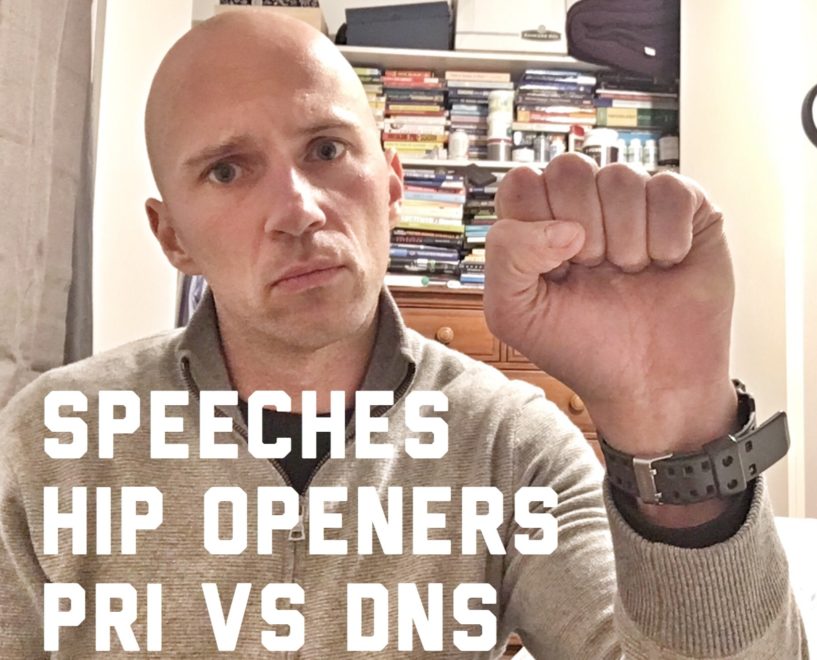Tag: DNS

Speeches, Hip Openers, and PRI vs DNS – Movement Debrief Episode 32
Movement Debrief Episode 32 is in the books. Here is a copy of the video and audio for your listening…
Chapter 2.1: Dynamic Neuromuscular Stabilization: Developmental Kinesiology: Breathing Stereotypes and Postural Locomotion Function
This is a chapter 2.1 summary of “Recognizing and Treating Breathing Disorders” by Leon Chaitow. You’re Writing About DNS???!!??! Yes,…
Advanced Integration Day 3: Thoracic-Scapula Integration
Day 3 was all thorax and scapula. Here we go! For day 1, click here For day 2, click here A…
Course Notes: DNS C
It was a Long Week After an incredibly long 5 days, I finally got the chance to assimilate what I…
Course Notes: DNS Summit
Why? In my short time out I have gotten heavily into the influence that breathing has on the nervous system.…
DNS B Course Notes
Whew, I recently finished (and still trying to process) the B level DNS course from the folks at The Prague…
